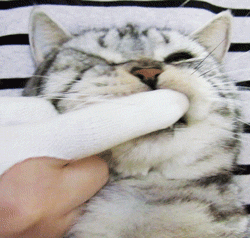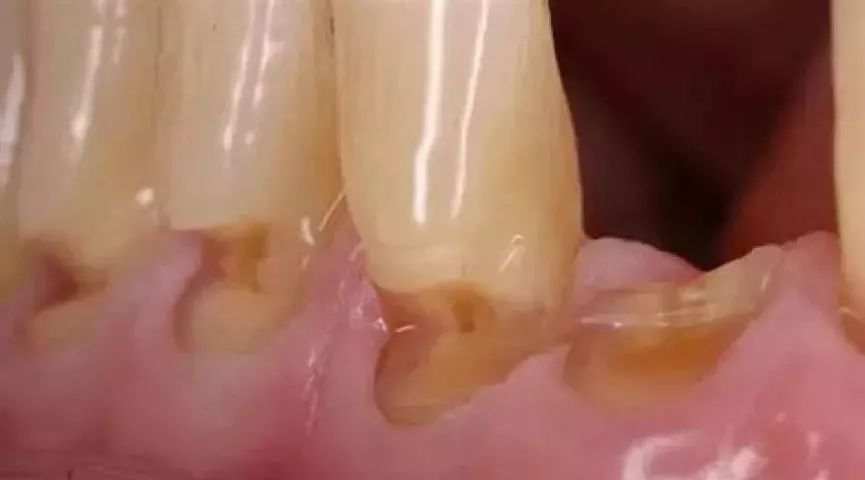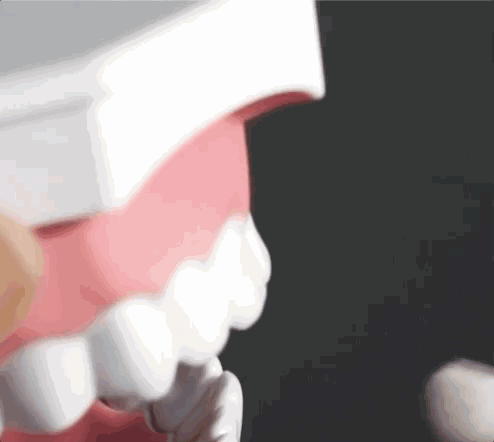We do it every day.
However, many people are afraid that the brush will not be clean and choose a violent brushing method-seesaw brushing.
In retrospect, would you also hold a toothbrush in your hand and brush it back and forth across your teeth…

Source: soogif.com
This [widening saw] method of brushing teeth not only makes the toothbrush unclean, but also easily causes a series of oral diseases in the long run.

Seesaw brushing
Brush your teeth out [out of the groove]
Some time ago, a friend of mine said that there was a groove in his teeth and he could even get his fingernails stuck in it. Sometimes his teeth were sour and very uncomfortable.
I quickly asked him to demonstrate his method of brushing his teeth. Sure enough, he was brushing his teeth in [widening the saw]!
This [groove] in his teeth is called [wedge defect] in stomatology.
The word “wedge defect” looks elegant and confusing. In short, it is the “groove” in the neck of the tooth in my friend’s mouth.
[Wedge-shaped defect] looks like this
▼


Photo Source: Provided by Author
A small groove in a tooth
There are many hidden dangers.
When this small groove is not so serious, you may not feel too much.
Don’t take any chances. Over time, you will suffer from gingival recession and tooth soreness and sensitivity, especially when your teeth encounter cold food, which is called sour and refreshing.
More seriously, pulpitis will occur when the [groove] is deep enough to reach the pulp in the center of the tooth.
Small partners who have suffered from pulpitis must have a personal feeling. Dental neuralgia caused by pulpitis is no laughing matter.

When the defect completely penetrates the whole tooth, it may even cause the tooth [middle] to break. Believe me, as a stomatologist, this kind of situation is not unseen.
However, it is more common for my friend to get his fingernails stuck in the [groove] of his teeth.
You may as well use your fingernails to check your teeth for [wedge-shaped defects].
Although the innate stress mode of the tooth determines that the tooth neck bears more stress, in addition, the secretion in the gingival sulcus of the tooth neck will also make the tooth neck more prone to demineralization and corrosion.
For most people, as long as they don’t bite too hard, there will be no big problem if they pay attention to cleaning their oral cavity.
But! If you get into the bad habit of brushing your teeth hard [seesaw] horizontally, the risk of tooth neck defects will be greatly increased.
Learning to brush your teeth correctly may be the best way to prevent [wedge defects].
What dentists recommend-
Improved Babbitt tooth brushing method
Throughout the ages, there have been many methods of brushing teeth, but the most popular and recommended by dentists is [improved Babbitt brushing method].
This method is easy to master and suitable for most people.
Now let’s learn step by step!
The bristles are at an angle of 45 degrees to the tooth surface and face the gums.
This is the starting posture of Babbitt brushing, which can ensure that both gums and gingival sulcus are brushed at the same time.
Bristles 45 degrees toward gums
▼

Photo Source: Provided by Author
Small horizontal tremor and brush.
[Small amplitude] means that the amplitude of movement does not exceed 2 tooth surfaces at a time. Considering the size of the toothbrush, it is a bit like [small steps].
After shaking horizontally back and forth for about 10 times, there is another additional action: turn the brush head and brush it towards the occlusal surface of the teeth.
Brush the lower teeth
▼

Photo Source: Provided by Author
Just like [spring breeze blows across the face], brush out all the dirty things in the gum sulcus.
Brush every face of your teeth and don’t forget to brush your tongue coating.
Not only includes the outer side and the inner side, but also carefully brushes to the occlusal surface of the teeth.
The occlusal surface can be brushed back and forth
▼

Photo Source: Provided by Author
After brushing every face of your teeth, don’t forget to brush your tongue coating lightly.
The whole process takes about 3 minutes. It takes no effort, patience and care.
How about, have you learned? Remember to share it with your friends. Together, your teeth are twice as good and your food is delicious.

This article has been examined by Wang Yang, a stomatologist.
Source of cover photo: www.hizy.net Genuine Photo Library
Responsibility: Homestead
